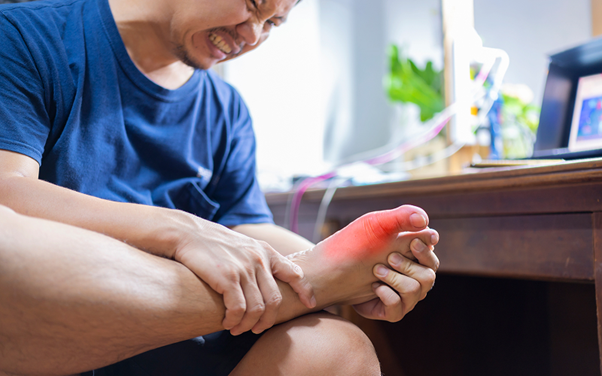If your toes are throwing a daily tantrum, your routine might be the reason. Bunion pain has a sneaky way of building up, especially when bad habits are left unchecked. What may seem like small daily choices may quietly fan the flames under that big toe bump. And no, it’s not only about the shoes you wear, though that’s a big part of the story.
Shoes That Squeeze, Pinch and Push
Let’s start with the obvious culprit. Tight shoes, narrow-toe boxes, and high heels are a recipe for bunion pain. They push the big toe out of alignment and increase pressure on the joint. The foot gets squashed like a sardine, and the pain just simmers all day.
Choosing the right footwear is not about looks alone. Your shoes should support the natural shape of your feet. Room for your toes to spread, a low heel, and solid arch support are small tweaks that can relieve stress. This isn’t fashion vs function; it’s fashion with function.
Standing Still for Too Long
If your job or lifestyle keeps you on your feet for long periods, your bunions could be crying out for a break. Prolonged standing increases joint pressure, especially if your weight isn’t evenly distributed. That constant pressure makes inflammation worse.
Take short sitting breaks. If that’s not possible, try shifting your weight often or rolling your feet slightly while standing. These small movements can reduce strain on the big toe joint and improve circulation.
Skipping Stretching and Strengthening
Feet are often forgotten in exercise routines. Weak foot muscles can worsen the tilt of the big toe, which increases bunion discomfort. Skipping simple stretches or mobility exercises gives bunions more power to twist your stride.
Incorporating toe stretches, towel scrunches, or balance work can gradually strengthen your feet. Consistency matters more than intensity. Don’t let laziness be the bunion’s best friend.
Ignoring Weight Management
Your feet carry your whole body. Every extra kilo adds pressure on the joints. While it’s not the sole cause, weight gain can speed up wear and tear around a bunion.
Simple food swaps, light daily movement, and regular hydration can help manage body weight. It’s not about dramatic changes. It’s about taking the load off those tired toes.
Going Barefoot on Hard Floors
Padding around at home without footwear may feel relaxing, but it isn’t always friendly to your bunions. Hard surfaces offer zero cushioning, and the shock goes straight to your feet. Over time, this can lead to increased joint inflammation.
Consider wearing soft-soled slippers or supportive sandals indoors. They provide a buffer between your bunions and the unforgiving floor. A little cushion goes a long way in dodging pain.
Delaying Specialist Care
One of the most damaging habits? Putting off a proper diagnosis. Many people delay visiting an orthopaedic surgeon in Singapore until the pain becomes unbearable. Waiting too long allows the condition to worsen, and in some cases, surgery becomes the only solution.
An orthopaedic surgeon in Singapore can assess the severity of your bunions and suggest targeted solutions. That may include custom insoles, toe spacers, or physical therapy. Getting a professional opinion early can slow down progression and delay or avoid invasive treatments.
Relying on One-Size-Fits-All Fixes
Online hacks and generic products might seem appealing, but they don’t always address individual needs. What works for one person may not help another. Over-relying on generic bunion pads or foot braces without expert input can lead to further misalignment.
Customised care, guided by professional advice, is often more effective in managing bunion pain long-term. It ensures your approach fits your foot, not someone else’s.
Rest, But Not Too Much
Feet needs movement to stay strong. Resting too often, or avoiding walks altogether, can lead to stiffness. On the flip side, overuse without support causes strain. The key is balance. Gentle, supported activity keeps joints mobile without overloading them.
Bunions don’t enjoy extremes. Keep your feet in motion, but listen when they signal fatigue. Alternating rest with low-impact movement can maintain joint function and comfort.
The Footnote That Matters
Small changes can make a big difference, especially when it comes to foot health. Your daily habits may be fuelling the bunion blues without you realising it. From footwear choices to skipping foot care, each move adds up. The sooner you kick these unhelpful routines to the curb, the sooner you can give your feet a well-earned break.Contact Specialist Orthopaedic Centre to find out how to treat your bunion pain with tailored care and expert guidance.

